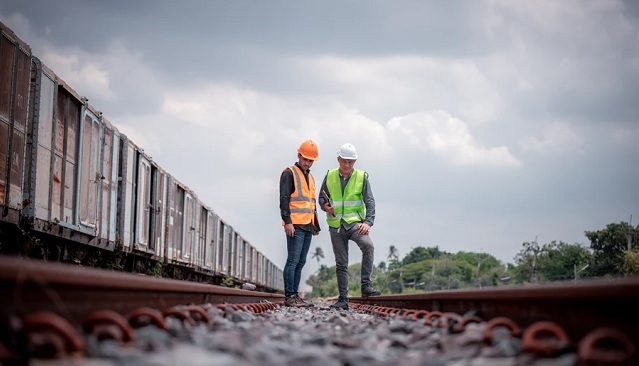5 Transportation Industries the U.S. Government Is Crushing With Regulations

Transportation is essential to any economy.
In war, each side tries to cripple the other’s economy by targeting and destroying its transportation infrastructure: ports, airfields, roads, bridges, railroads, rivers, and canals. The United States, however, like many countries, wrecks its own transportation systems—not with bombs but with laws and regulations.
The American Henry George (1839-1897) once commented on this dismal state of affairs. “What protection teaches us,” he wrote, “is to do to ourselves in time of peace what enemies seek to do to us in time of war.”
Let’s explore some examples of how this works.
1. Railroads
The Interstate Commerce Commission (ICC), created in 1887; the Sherman Antitrust Act of 1890; the Elkins Act (1903); the Hepburn Act (1906); the Mann-Elkins Act (1910); the Panama Canal Act of 1912; and the Valuation Act (1913) worked together and at cross purposes to ensure that the nation’s railroads could neither compete, cooperate, nor coordinate with each other. Routes, lading, and rates were all heavily regulated. The result was that even before the country entered World War I, its railroads were grinding to a halt, incapable of transporting steadily increasing amounts of war materiel to the nation’s seaports. As Marc Scribner explains:
Pooling equipment and facilities could have eased the traffic crunch in the short-run, but the Interstate Commerce Act explicitly prohibited the voluntary pooling of railroad resources. In 1917, railroads appealed to the ICC for a 15-percent rate increase to help offset some of the rising costs associated with wartime traffic and afford them the opportunity [to] raise revenue necessary to invest back into network enhancements. The ICC rejected their request.
Frustrated with the growing railroad network inefficiencies during the war, President Wilson nationalized the entire railroad industry. On December 28, 1917, the newly formed United States Railroad Administration took over American railway operations. The agency immediately pooled all railroad equipment and facilities, and six months later increased freight rates by 28 percent.
Scribner adds that partial deregulation in the 1970s saved the country’s railroads from “the brink of collapse.”
2. Shipping
The Merchant Marine Act of 1920 (“Jones Act”) prohibits transporting goods between American ports on ships that aren’t American built, owned, registered, and crewed. The Act significantly increases the cost of shipping American products between American cities. As a result, goods that could more efficiently be sent by water are sent by rail, truck, or air, wasting fuel and producing far more pollution and CO2 emissions than necessary. In addition, the high cost of shipping domestic products leads Americans to buy more from abroad. Finally, the Act has crippled America’s shipbuilding industry.
3. Ports
While Covid and Covid lockdowns exacerbated problems at America’s seaports, the issues have been building for decades:
- Longshoremen’s unions are limiting automation and job flexibility
- The Foreign Dredge Act of 1906 artificially increased the cost of the dredging that would allow our ports to service more and larger ships.
- State and local laws prevent seaports from expanding their container storage facilities
4. Air Travel
During the four decades from 1938 to 1978, the Civil Aeronautics Board (CAB) regulated passenger airlines engaged in interstate operations. It assigned routes, set fares, limited market entry, subsidized airlines, and regulated mergers. While the CAB prohibited price competition, it did allow airlines to compete on quality of service and frequency of flights. As a result, airlines became inefficient, overcapitalized, and overstaffed. Airlines profitably flew frequent, partially-booked flights, which, while convenient for customers, wasted fuel, labor, and equipment. Intrastate airlines – not subject to the CAB’s entry restrictions or price controls – could transport customers for half the cost of their CAB-certified rivals.
5. Trucking
From 1935 to 1980, the ICC regulated the nation’s trucking industry. The agency controlled rates and routes and limited market entry. Applicants for operating rights had to prove that existing firms weren’t already providing the proposed service and that the firms wouldn’t be hurt by the additional competition.
When President Jimmy Carter signed the Motor Carrier Act of 1980, which largely deregulated the trucking industry, he stated that the reforms would reduce “consumer costs by as much as $8 billion each year… and… conserve annually hundreds of millions of gallons of precious fuel.”
California’s AB5 law (also known as the “gig worker bill”) restricts companies’ ability to designate workers as contractors. Because over 60% of California’s independent owner-operators fall under the law’s definition of regular employees, AB5 will have a significant impact on the state’s trucking industry. By reducing or eliminating logistics companies’ ability to hire short-term trucking services and by driving some independent truckers to leave the state or the business, the law will further decrease the ability of the Los Angeles and Long Beach ports to clear their backlogs. Bottlenecks at these ports impact not just California but the entire nation.
The Bottom Line
Transportation is essential to any economy. Transportation expands the size of markets, market size determines the scope for the division of labor, and division of labor drives productivity. A nation’s transportation infrastructure is critical to its survival, but even the best infrastructure in the world cannot move people and products if laws and regulations create enough roadblocks.
AUTHOR
Richard Fulmer
Richard Fulmer worked as an engineer and a systems analyst, and is now retired and a free-lance writer. He has published some thirty articles and book reviews in free market magazines and blogs. With Robert L. Bradley Jr., Richard wrote the book, Energy: The Master Resource, which was required reading in classes at four different universities, including the University of Texas and the University of Toronto. He is currently working on another book, Caveman Economics: Basic Economics in 25 Prehistoric Tales.
EDITORS NOTE: This FEE column is republished with permission. ©All rights reserved.


Leave a Reply
Want to join the discussion?Feel free to contribute!